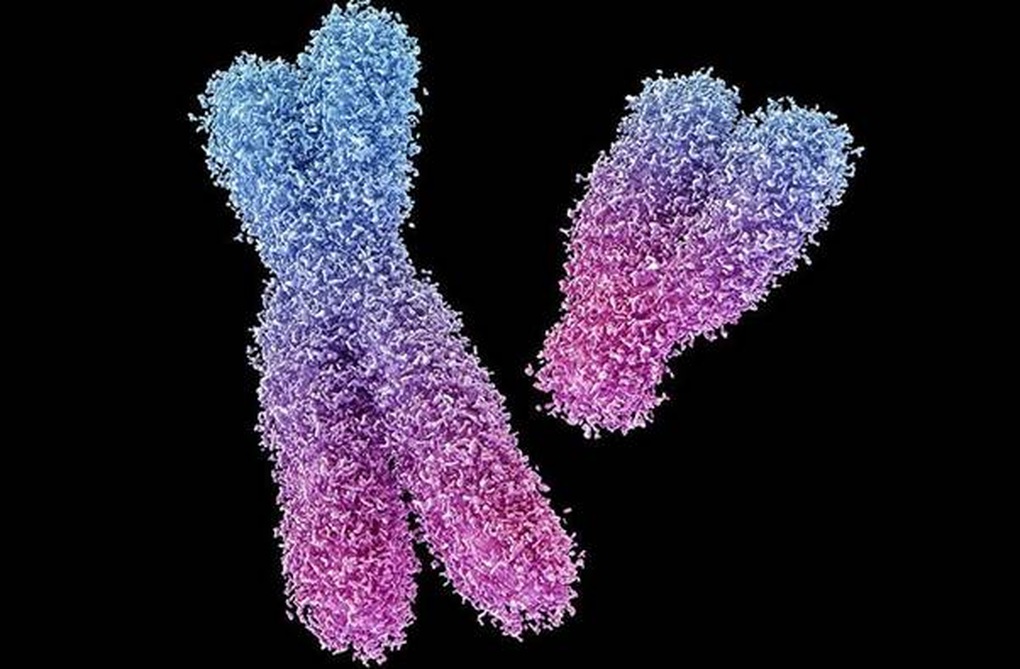SHOX Gene: The Genetic Clue Hidden in Height
Height has long been thought to be the result of many factors: genetics, nutrition, hormones and living environment. However, scientists at the Geisinger School of Health Sciences (USA) have discovered that a large part of the height difference between men and women may stem from the way the SHOX gene works differently between the two sexes.
The SHOX (short stature homeobox gene) plays an important role in the development of long bones in the arms and legs. This gene is present on the X chromosome in both males and females, but interestingly, it is also present on the Y chromosome - which only males possess.

Height has long been considered the result of many factors: genetics, nutrition, hormones and living environment (Photo: Getty).
In the study, the team analyzed data from more than 1,200 people with special chromosome structures, extracted from large medical data repositories in the UK and the US.
They found that while women have two X chromosomes, one of them is often “turned off” – a phenomenon called X-inactivation. This prevents excess gene expression but inadvertently reduces SHOX activity in women.
In contrast, males - despite having only one X - have an extra, fully active copy of SHOX on the Y chromosome. As a result, the SHOX gene is more strongly expressed in males, helping them grow about 3.1cm taller on average than females.
"This is one of the rare evidences that a gene located on the Y chromosome actually directly affects body morphology," the authors said.
Odds ratio: Genes account for nearly a quarter of the reason
According to the study's analysis, the SHOX portion active on the Y chromosome can explain up to 22.6% of the average height difference between the sexes, which ranges from 12.85 to 13.72cm depending on the region.

The secret to height lies in a gene in the XY chromosome (Photo: Getty).
Scientists have long believed that hormones, especially testosterone, are the main factor in accelerating male physical development during puberty. But the new findings suggest that the influence of sex-specific genetic factors may be greater than previously thought.
"We knew SHOX was associated with stature, but we never expected it to be significantly more highly expressed in men due to differences in chromosome structure," said study co-author Dr Michael White.
Impact beyond height
This discovery is not only a step forward in understanding growth, but also opens up further research into the biological differences between males and females.
According to scientists, clearly distinguishing between the influence of hormones and genes will help discover why many diseases have different incidence or manifestation between the two sexes.
For example, women are at higher risk for autoimmune diseases such as lupus, while men have higher rates of neurological and cardiovascular disorders.
"SHOX research could be a stepping stone to better understanding the biological mechanisms behind sex differences in diseases such as Alzheimer's, autism, attention deficit hyperactivity disorder (ADHD), or even drug response," the report said.
Previous studies have shown that X chromosome inactivation is not as complete as we thought. There are genes that escape this inactivation, and SHOX is one of them. However, its expression is still more limited than its counterpart on the Y chromosome in males.
The research results were published in the journal Proceedings of the National Academy of Sciences (PNAS) , and immediately received attention in the genetics and personalized medicine communities.
According to experts, finding genes that function differently between the two sexes is a key factor in helping medicine develop in the direction of personalized treatment - not only according to disease but also according to biological sex.
Source: https://dantri.com.vn/khoa-hoc/vi-sao-dan-ong-thuong-cao-hon-phu-nu-ly-do-bat-ngo-vua-duoc-phat-hien-20250526074704087.htm























![[Photo] National Assembly Chairman Tran Thanh Man visits Vietnamese Heroic Mother Ta Thi Tran](https://vphoto.vietnam.vn/thumb/1200x675/vietnam/resource/IMAGE/2025/7/20/765c0bd057dd44ad83ab89fe0255b783)













































































Comment (0)